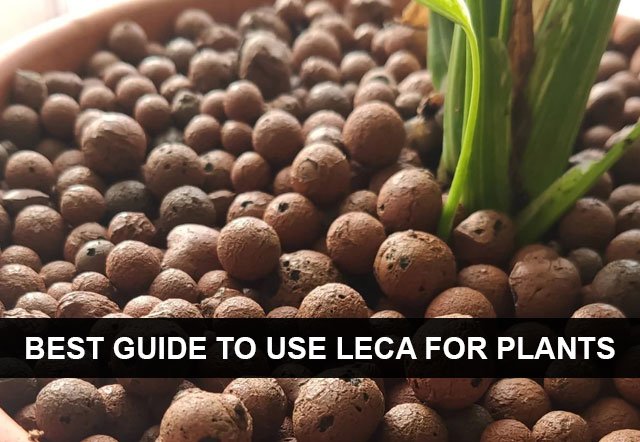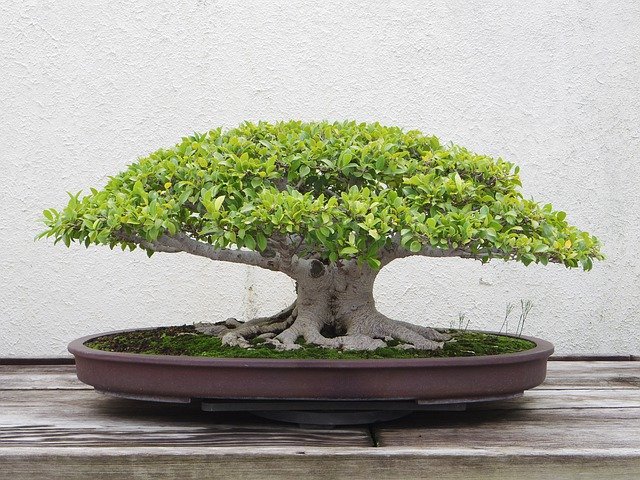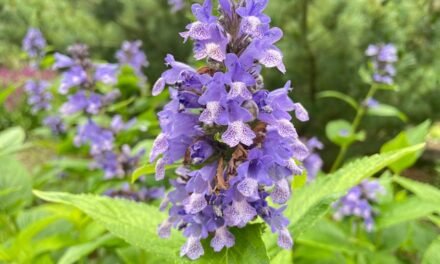When I first researched about LECA, it seemed very interesting that you could grow indoor plants with the help of some soil balls. Surely, it happens to you, your interest will also develop in using LECA for plants.
Well, don’t rush yourself to learn about Leca. You should be realistic to know about what LECA is.
In this guide to use LECA for plants, you will find all the answers to your queries about how you become able to use LECA in your house plants.
What is LECA for plants?
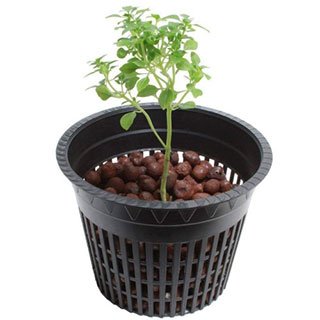
Well, the term LECA stands for Light Expended Clay Aggregate and is one of the most unique ways to grow your indoor plants. These clay balls have a huge range of use, but, most probable, these clay balls are used for growing indoor plants because it excludes all the damaging effects such as root rot, diversity of oxygen, bad drainage of water etc.
LECA is basically a clay ball that is made in the presence of a high temperature. These clay balls will not break with the soft touch of your fingers, but if you try to apply pressure, balls of LECA will turn into simple rough clay. These clay balls have small pours that help to store water and absorb nutrients.
Pro tip: I recommend you to use a small size LECA instead of a large size because a small radius LECA can be able to hold more water than the larger ones.
Why use LECA for plants?
As we know, plants need assistance and care to grow rapidly. If you use LECA for plants, it will reduce much of your efforts to grow house plants because these clay balls maintain the level of acidification and nutrients in your house plants.
These aqua clay balls are fungus free and do not cause root rot event if you over-water them because these circular clay balls have an excellent drainage system.
Don’t frame the wrong image in your mind that you don’t have to do anything except watering them. If you have pour LECA instead of soil, use fertilizers such as water-fertilizer or etc.
You will find more about LECA fertilizers in this guide to use LECA for plants.
How to use LECA for plants?
Queries about how to use LECA for plants are the most asked question in the Google search engine as most beginner gardeners don’t know how to use LECA for plants.
Now, you have got the information that LECA is a ball of clay that is rich with dust, so you have to use it with proper peppering.
Follow these useful steps to use LECA for plants.
Step 1:
Take a bowl of water and fill it with LECA for 10 to 15 hours. Drown these balls until they soak all the water from the bowl. Your LECA is now able to be used for growing plants.
Now, choose a suitable plant and pour it in a pot. Try to use a glass or transparent plastic pot instead of an ordinary port because it looks classy in your indoors.
Step 2:
After selecting a suitable size of glass pot, fill it with aqua clay balls in half and place your cutting in the center of the pot.
Now, add some more LECA to your pot so that the cutting of plant holds it position.
Step 3:
Furthermore, add some water in your pot in a particular way that water does not touch the roots of the plant.
The roots of plants slowly drink water from clay balls when they need it and, in this way, they keep themselves hydrated.
Step 4:
Last but not least, place it in a places where this plant gets fresh air and light. Don’t add regular water because this plant is absorbing sufficient water to remain hydrated.
Make sure you water them in that case if Leca balls completely dry out.
If you water them regularly, it may cause the growth of algae and other harmful nutrients that can promote the growth of algae.
Note: If you want better growth of plant in Leca, use the 3 soak method. Just make sure your 3rd soak should be in nutrient rich water. Try to use water fertilizer in the 3rd soak because it helps to grow your cutting of plant in leca more eagerly.
What type of plants should we grow in LECA?

Leca for plants has become popular in our society because it adds attractiveness to your indoor plants, but, the case is, we are not well educated about what type of plants grow best in Leca balls.
Before selecting a plant, just make sure your plant has the following properties.
1. Roots
The indoor plant that you have selected to grow indoor will be able to produce long roots easily and quickly.
2. Oxygen rich soil
Try to use such indoor plant that will grow extremely well in oxygen rich soil.
3. Soil nutrient free
Select those indoor plants which don’t rely on soil that is rich with nutrients. Try to use solid plants that can bare non nutritious soil.
4. Care free
You should select those type of plant that doesn’t require proper handling or regular checkup.
Best plants for LECA.
You cannot just grow any type of indoor plants in leca because these round balls have no nutrients which are very essential for healthy growth of plants.
Here is a list of best plants for leca.
- Coleus purple plants
- Orchid plants
- Snake plants
- Aloe plant
- Wandering Jew
- Monsteras plant
- Alocasia Zebrina
- Bromeliads
Note: In your region, if these plants don’t exist, then you can try your luck to plant any kind of plant. Make sure you should follow the rules of how to use LECA for plants which were discussed earlier.
How to prepare LECA for plants?
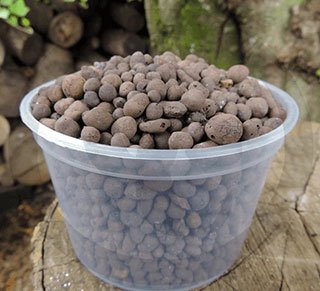
Preparation of leca for plants is the most important thing that you have to do first. You can’t place plants in rough and dry balls.
First, drown deep your leca in a tub of water and leave it for 48 hours/ 2day. The reason for doing such action is that these balls suck out all the water in the tub and now these aqua balls can be used for propagating plants.
Gardening experts prefer to change water in the tub after 1 day and fill it with fresh hose water.
You can also add water-fertilizer in the water and leave it for another day so that these round balls soak all the nutrient rich water. Now, your leca is prepared for plants.
What fertilizer should I use for LECA?
As we know that soil has many different kinds of nutrients which are present naturally in it, but in leca, your plant will not find any healthy nutrients because it is an inorganic material.
By adding fertilizers to the water of leca, your leca balls will get all of the nutrients that a plant requires to grow healthily. You can use water-fertilizer to cover all the nutrients that a soil can provide.
Plants need micro-nutrients to grow and some fertilizers are rich with these nutrients, so try to use this type of nutrient instead of others.
The 2 of the most popular fertilizers for use to grow plants in leca are Growth technology foliage focus and Dyna-Gro foliage pro.
How to stop rotting plants in LECA?
If you see your plant roots start rotting, add H2O2 (Hydrogen per-oxide) to the water. In this way, all the rotted plants will stop rotting and your plant will grow whole heartedly in aqua balls.
If hydrogen per-oxide is not showing its effect, gently pull out the cuttings of the plant and get rid of rotted roots.
The most effective fertilizer to stop rotting plants in LECA is Oxygen Plus 3%. It helps to remove any kind of bacteria and fungi from your plant.
You should use at least 5m/l of this fertilizer in a total of 1-liter of fresh water.
How to transfer plants from soil to LECA?
The transferring of plants from soil to leca is an easy task, but you have to do it very carefully because it can damage the roots of plants. The environment of the plant rapidly changes when you try to transfer the plant in leca balls, so make sure to provide moderate temperature and moderate light while transferrin it.
You should select young plants to transfer pot, because young plants can bear any type of conditions and environment during the transfer process from old pots.
To transfer plants from soil to leca, follow these steps.
- First, remove the plant from the soil with soft hands and the best time to do this is when the soil of the plant is dry. This is because the soil will not stick into the bunch of roots and you are able to use it for the transfer process. Clean the roots with a fresh water of hose and allow to dry the roots for almost an hour.
- Carefully, place it in a normal condition and remove any bit of dirt on the roots. The main reason why you should do that is when you place the cutting of a plant in leca balls, the roots of the plants will eagerly drink water from leca balls.
- The container or pot should be maintained properly to place cutting of plant. If you are using glass pots or transparent plastic pots, clean them properly from the inside.
- Use hydroponic fertilizer as it will support the healthy growth of plants and protect them from harmful and damaging fungi and root rotting. The plant in the leca will take time to adjust to the new environment.
Benefits of using LECA for plants

Well, every new type of soil has some benefits from its previous usage soil. Leca is one of the most usable soils in these days as it provides numerous benefits and decors your indoor houseplants in a unique way.
Here are some useful benefits of using leca for plants.
Pests free
As we know, leca is an inorganic material in which the roots of plants remain at a distance from water and, due to this reason, there is a slight possibility of rotting roots.
Due to no root rotting, there is less attraction of harmful pests that can eat your plant and restrict the growth of plants.
Leca balls have no natural nutrients which divert the attention of harmful bugs and pests, but on the other hand, soil is rich with multiple natural nutrients that attract the attention of pests and other harmful diseases to take birth in a plant.
These aqua clay balls provide a humid environment around the roots because these balls have a certain gap around them in which evaporation takes place and you will get a pest-free environment.
Easy care
In this busy world, you don’t have much time to take care of your indoor plants regularly. The problem of caring for your plant has been made easier by LECA balls as these clay balls regulate moisture that automatically stops the over-flow of water. You just have to fill water when the tank or pot is empty.
The only thing that you will feel horrible about is adding fertilizer in the tank but hang on! You can do it in an easy way.
Simple, just mix your fertilizer such as hydroponic nutrients in water and pour it in a tank full of leca.
Once in a while, try to wash the roots of the plant as well.
Maintenance free
Every person has some experience of growing plants in soil. You have to water and fertilize soil regularly or in the space of 2 to 3 days.
If you start using leca, your fear of maintenance will definitely reduce as it regulates the moisture of plants and sucks water on its own. Your plants get the precise amount of water that it requires, thus, it approximately takes 4 to 5 weeks to completely flush up all the water in the tank.
Reusable and long-lasting
It seems strange, but it is possible that you can reuse leca balls. Unlike soil, it has no nutrient level, but you can reuse it for other varieties of plants. You can easily transfer leca balls into another pot or basket.
LECA is able to last for very long time because it is an inorganic material. You can reuse it while planting another specie of plant. Just wash it with fresh water before reusing these balls into another pot.
Visibility of roots
By using leca, you can easily access the roots of your plant by using a transparent glass pot.
I recommend you to use glass pots because you can easily access the visibility of the roots and it looks amazing in your indoors.
Inexpensive
With proper care of leca balls, you can reuse them for quite a long period of time, so if you compare it to soil, these aqua clay balls are less expensive. However, the first purchase of a leca can be expensive, but after getting it, your cost will be fulfilled as time passes.
Place indoor anywhere
You can easily add leca in any size of pot in your indoors but if you use glass pots, these balls will look amazing in your house. Most people use leca for houseplants to decor their indoor windows, side tables and deaf corners of their house.
You can also reuse old balls of leca in your new potting, so in this way, you don’t need any extra storage to store these clay balls.
FAQs
Q: Can I use LECA for every plant?
A: As mentioned above, you can use leca for every plant, but the problem is that you will face difficulty in growing these plants which are not mentioned in the above list. You should plant only those types of plants which I have mentioned above in the best plants for leca title.
Q: Should roots touch water in LECA?
A: No, the roots shouldn’t touch water in leca because it can cause the root to rot. Roots of plants will get enough water through these balls, so you don’t have to fill up the pot with lots of water in it. Try to mark the point where the roots of the plant start ending and fill only that amount of water.
Q: How long do you let LECA soak?
A: It usually takes 24 hours/ 1 day to soak water in these clay balls. I would recommend you to soak these balls in for almost 48 hours/ 2 days to get a better result of growth in plants.
Q: Can you mix soil and LECA?
A: By mixing up soil and leca, you can improve the drainage system of your mixed soil. The roots of a plant will be able to get more oxygen and generate healthy growth of your plant.
Q: Do plants grow fast in LECA?
A: Such types of plants that have a large root system can grow extremely fast in leca. These plants are in the hunt for moisture to hydrate themselves and clay balls are full of moisture. So, plants that are in search of moisture will grow fast in these balls.
CONCLUSIONS
If you are aware of the benefits of using lightweight aqua clay balls, then you should use this amazing solution. Right fertilization is the main thing that you should have to do properly. You should take help on every aspect from this blog on best guide to use LECA for plants.
I will guarantee you that whenever you start to propagate plants in leca, you will find more comfort and feel relaxed as compared to the soil.
Leca is a bit expensive inorganic material when you first buy it, but you can reuse it for quite a long period of time. In this way, it will cost you much less than the cost of soil.
In the end, I will say that you should try at least once to propagate your indoor plants in leca.

